So, after 5 hours on a coach, we finally reached Diamantina. To start with, let me talk about the name – if gold is in the name of Ouro Preto, here it is all about diamonds, since the town was the centre of miners and adventurers of the 18th and the 19th centuries who prospected for and mined diamonds in this area.
Like Ouro Preto, Diamantina also spreads across steep slopes and the coach terminal, as well as some newer parts of the town are located on an elevation. Thus, one needs to descend a very steep street in order to get to the centre of the town. Sneža and I agreed to go down on foot, but to go back in a taxi (just sitting in a taxi and watching it struggle with the steep and the flagstones that kill the suspension was enough for one to become tired).
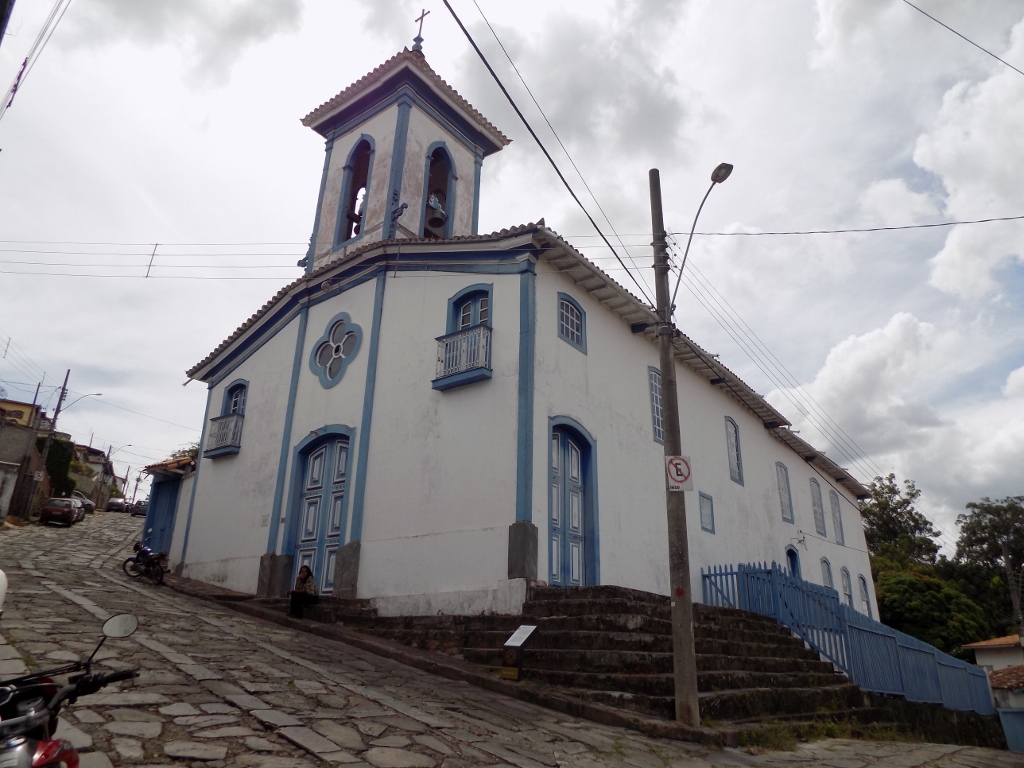 Church of Our Lady of Mercy from 1778
Church of Our Lady of Mercy from 1778
In addition to this high gradient of some streets, in Diamantina, like in all other small towns we visited these days, it is characteristic that the houses are very picturesque and often colourful or at least painted in bright colours or have bright details.
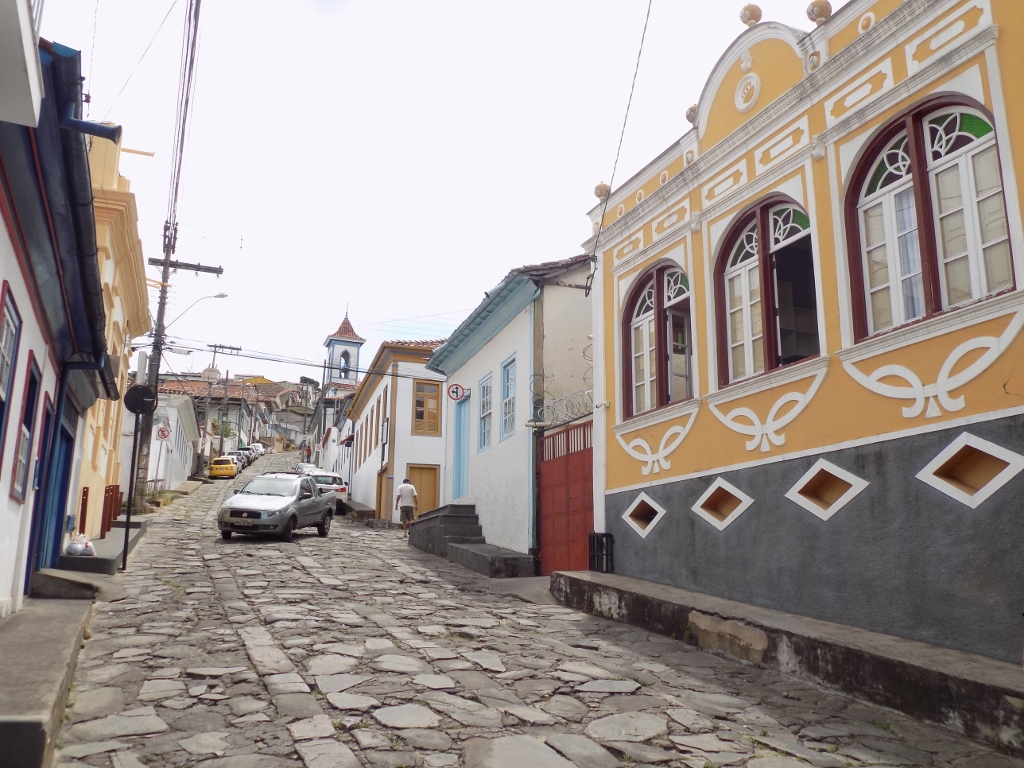 Diamantina, one of the typical streets
Diamantina, one of the typical streets
When we descended enough into the historic centre to see the Cathedral, we decided actually first to head in the completely opposite direction and that was in the direction of Chica da Silva’s House.
This is the house that was, in the second half of the 18th century, inhabited by João Fernandes de Oliveira, owner of a diamond mine, but the house is known by the name of his long-time partner who used to be a slave and he was in fact her third owner. Although they never got married, they had numerous children together (13 of them) and she was highly influential. While living with one of the wealthiest people in Brazil who obviously loved her very much, Chica da Silva was famous for her wealth, extravagance and power.
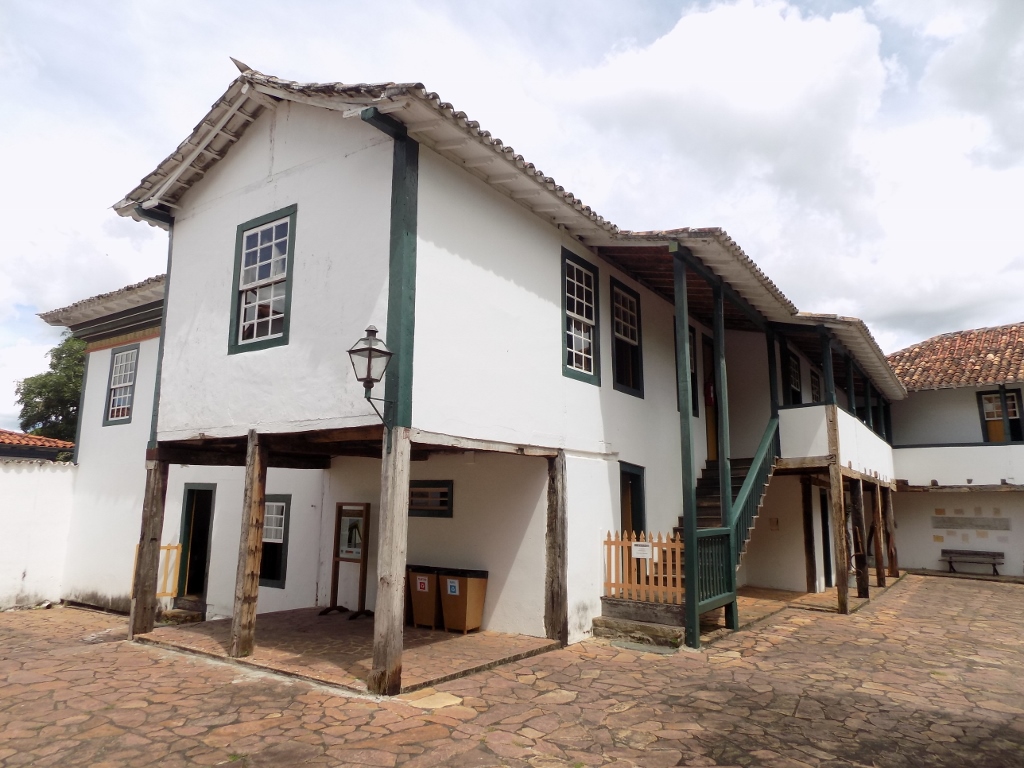 Chica da Silva’s House, courtyard
Chica da Silva’s House, courtyard
The story about Chica de Silva and the Church of Our Lady of Mount Carmel (Igreja de Nossa Senhora do Carmo) that may be seen from the windows of this powerful woman’s house is particularly interesting. Namely, this is the only church in Diamantina whose tower is not located in the front section above the entrance door, but significantly farther back, almost above the altar.
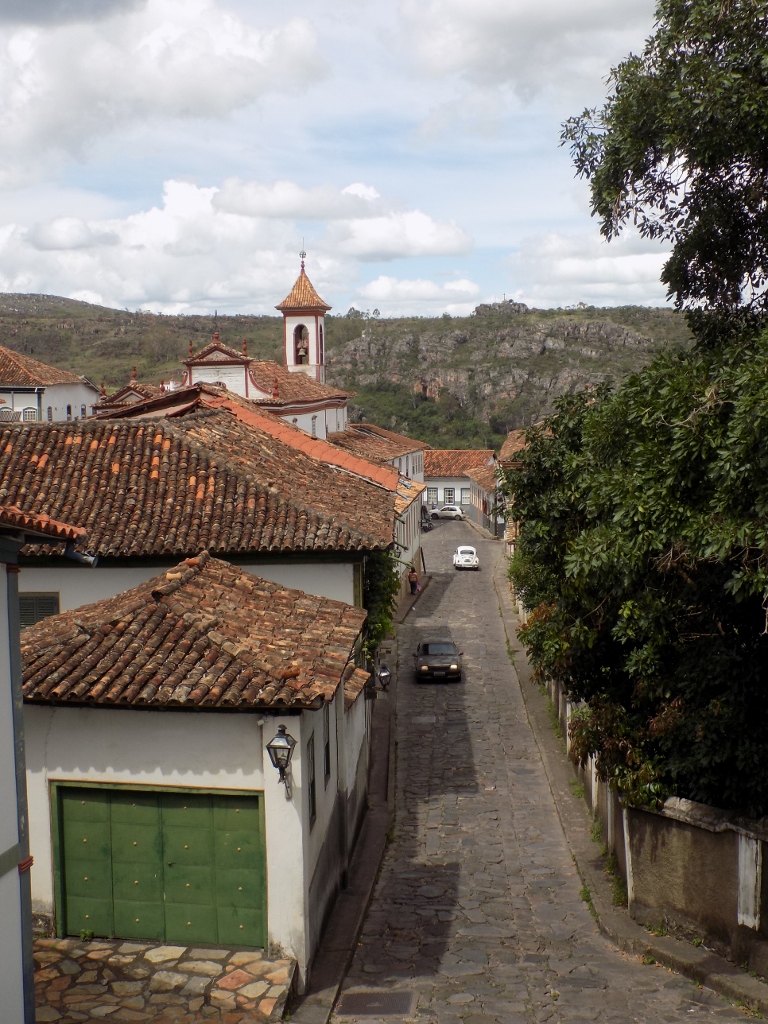 View from Chica da Silva’s House, the Church Our Lady of Mount Carmel may be seen farther up the street
View from Chica da Silva’s House, the Church Our Lady of Mount Carmel may be seen farther up the street
The church was built between 1760 and 1765, with the construction costs covered by none other than João Fernandes de Oliveira, who actually had some fantastic contract with the Portuguese crown related to the mining of diamonds. Still, the story about the tower says that at the time when the church was built the law prohibited black people from sitting any closer to the altar than the line marked by the tower, which means that they practically had to stay outside before the entrance door. In order for beloved Chica da Silva to be able to be closer to God, while at the same time clearly demonstrating to all how powerful she was, the tower was moved towards the back part of the church and during the masses this former slave could sit peacefully and lawfully in the first rows of the church.
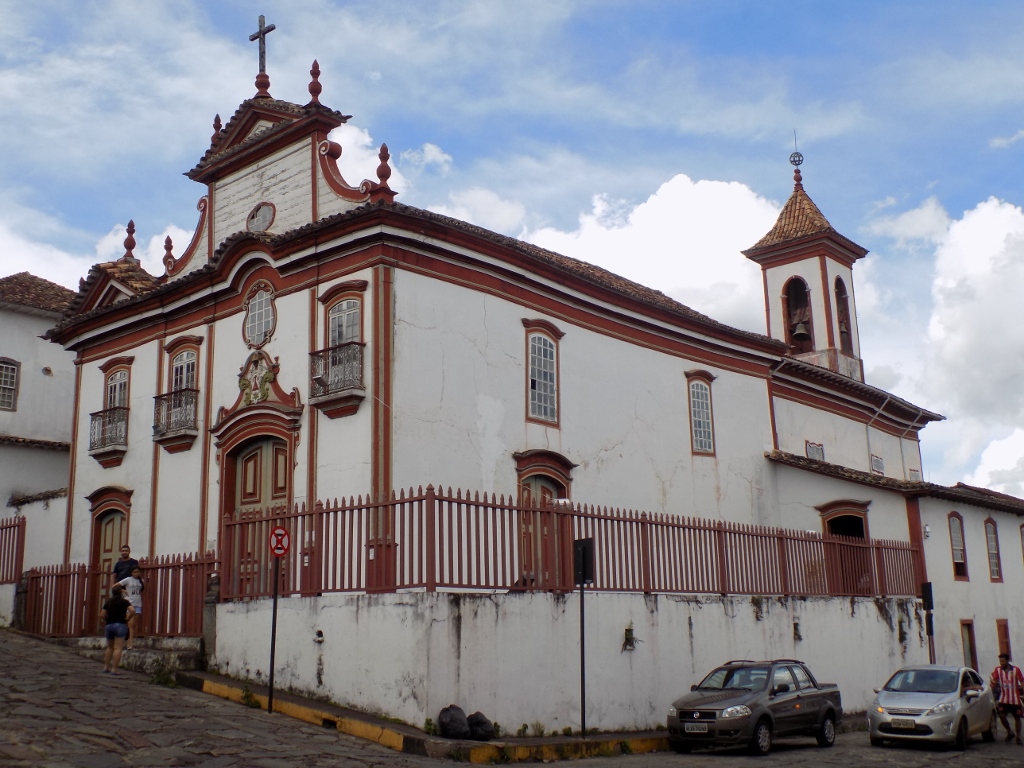 Church of Our Lady of Mount Carmel
Church of Our Lady of Mount Carmel
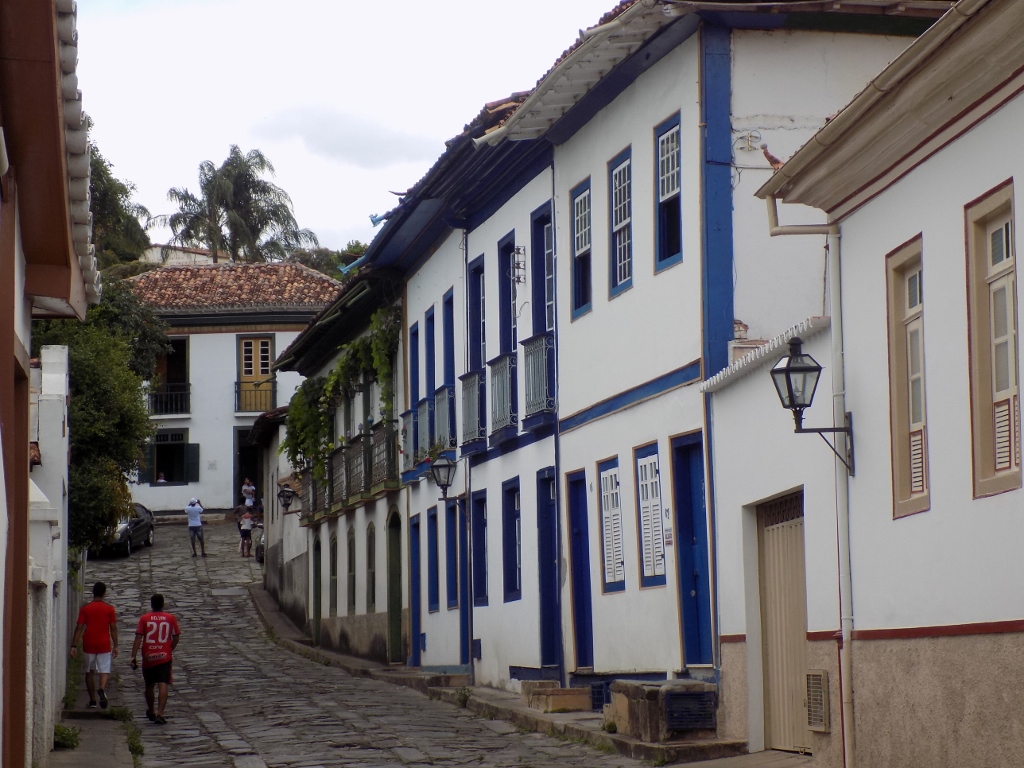 View from the Church of Our Lady of Mount Carmel towards Chica da Silva’s House at the end of the street
View from the Church of Our Lady of Mount Carmel towards Chica da Silva’s House at the end of the street
Regardless of this story about a slave who married well, or the one from the previous text concerning Chico-Rei who managed to free himself and his entire tribe from slavery, which seem almost romantic, I have a horrible problem with slavery as a phenomenon among humans. Never, ever, ever, ever, under any circumstances is it alright for one man to use another as a slave. Every time I hear of something like that, I have a very strong internal reaction and Sneža even went so far as to suggest that I was probably a slave in some of my previous lives, since I have a resistance to the notion even when the story concerns events from a distant past.
Be as it may, after our visit to the Church of Our Lady of Mount Carmel we continued walking around Diamantina and thus we soon saw parts of the Church of Our Lady of Rosary.
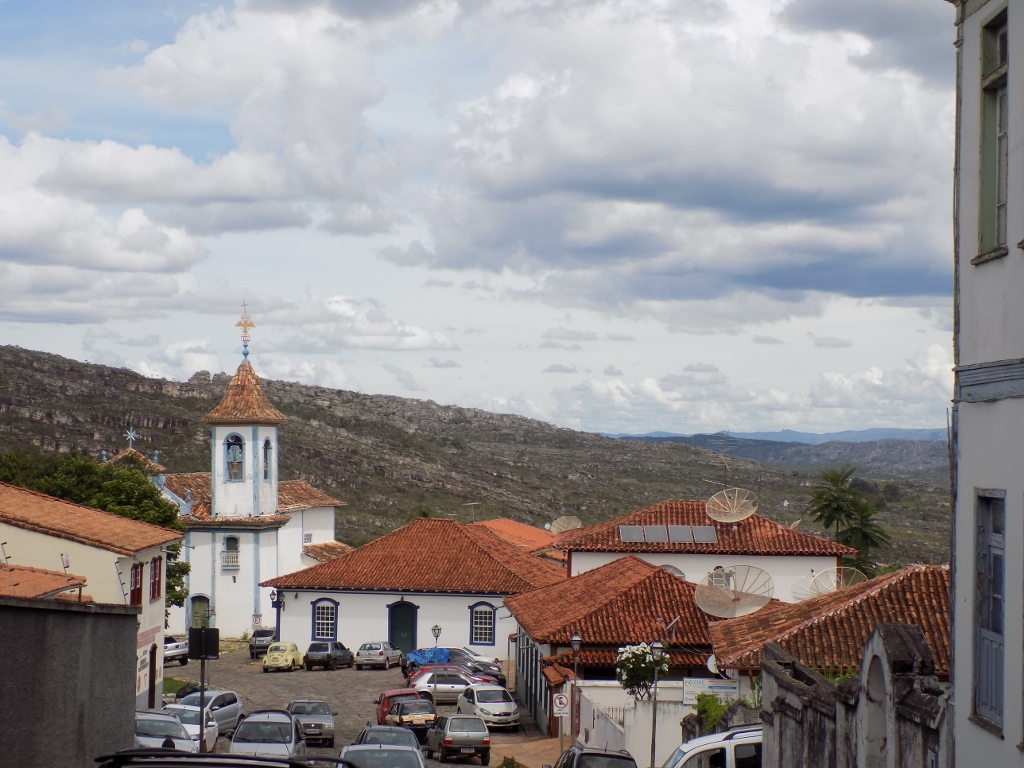 Going down towards the Church of Our Lady of Rosary
Going down towards the Church of Our Lady of Rosary
This is the oldest church in Diamantina and it was built between 1728 and 1731. It also differs from the other churches by the position of its tower, but here this concerns the fact that the tower is moved to the side in relation to the central axis of the church.
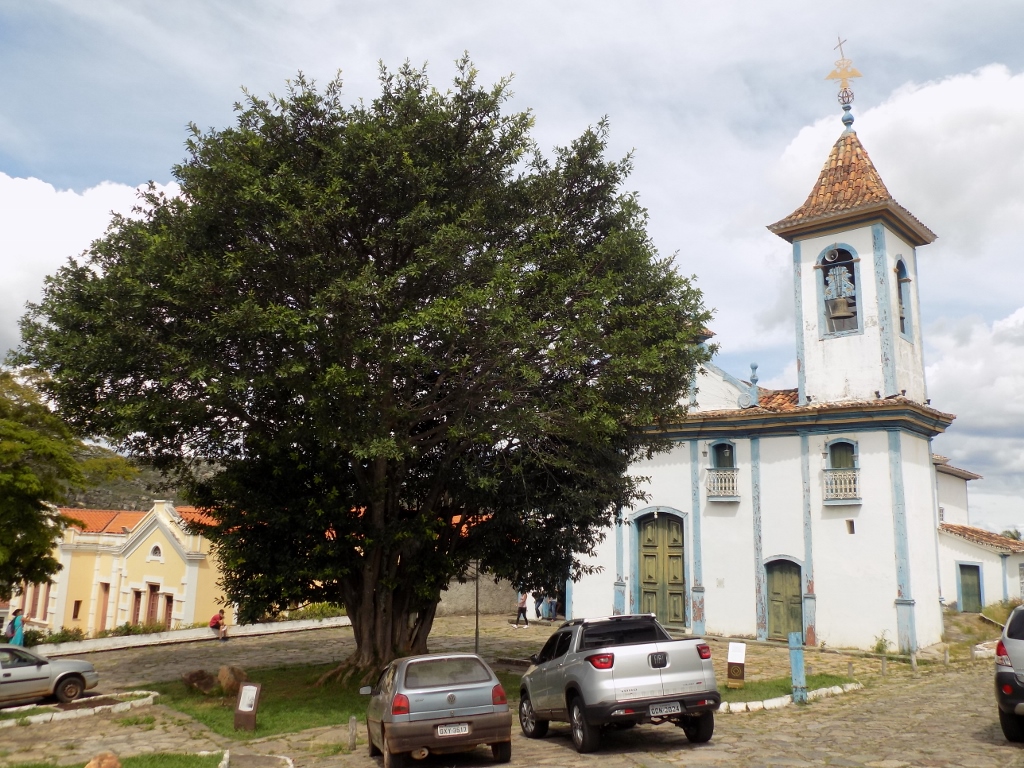 Church of Our Lady of Rosary
Church of Our Lady of Rosary
However, what makes this church in a way quite special is not necessarily the building itself, but rather what is in the tree in front of it. Namely, in the first half of the 20th century, a priest from this church placed a large wooden cross in front of the building and then, with time, a wild tree started to grow around it. Already at the very beginning of this unusual symbiosis, a local photographer took a photo of the events and thus it is possible to see what has happened to the tree and to the cross over time. In fact, what actually happened is that the tree completely engulfed the cross and it is now necessary to walk around the tree in order to discern the cross.
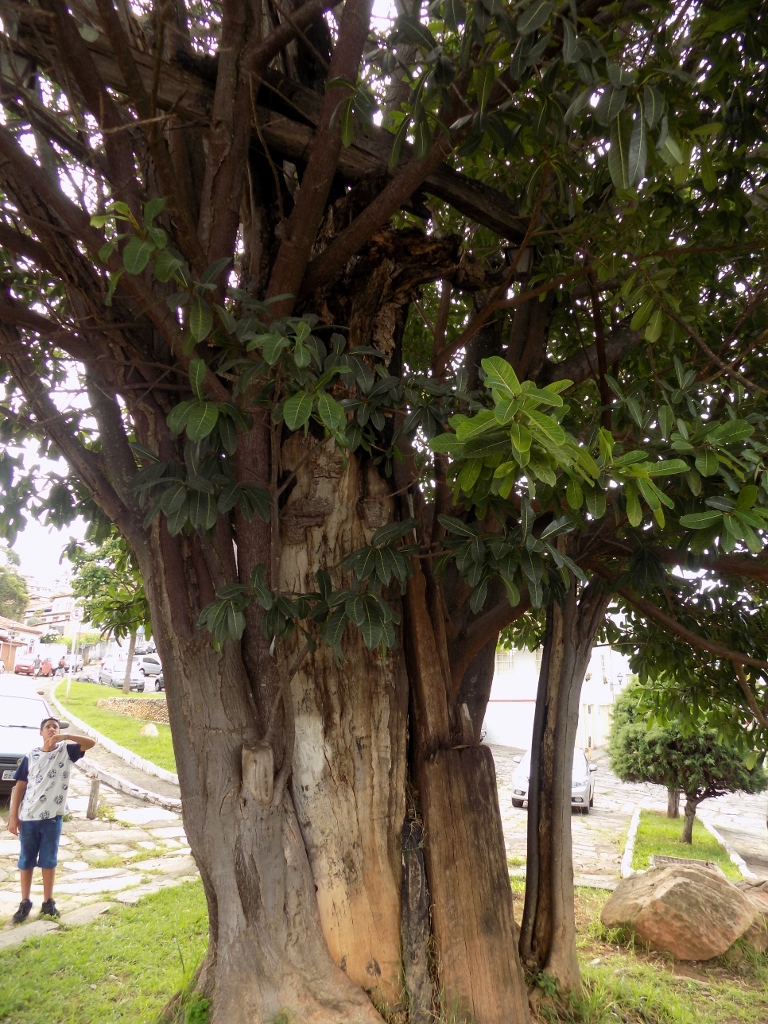 A ficus-wooden cross symbiosis
A ficus-wooden cross symbiosis
After this visit, we headed leisurely for the central part of the town. As I’ve said, Diamantina has an abundance of very picturesque houses.
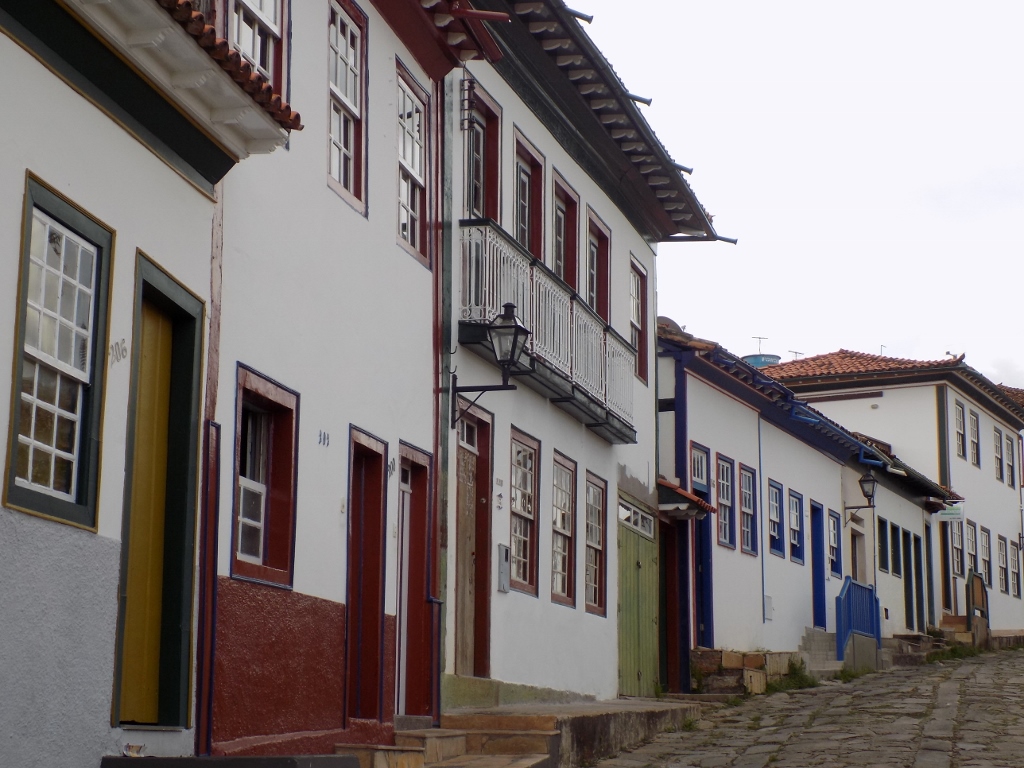 Details from Diamantina
Details from Diamantina
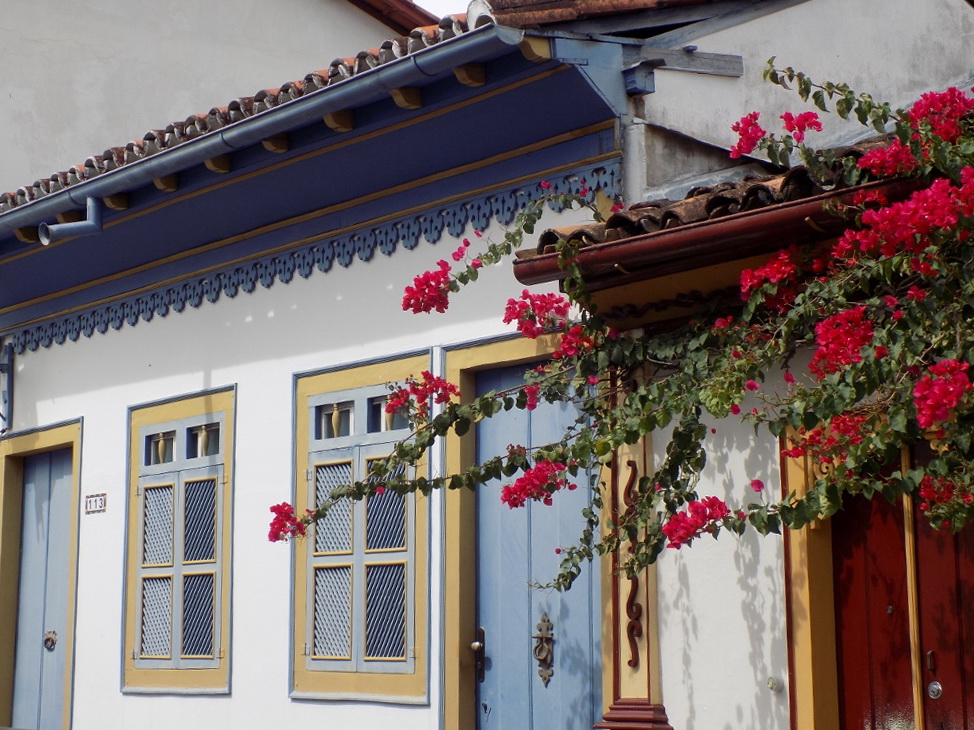 Details from Diamantina
Details from Diamantina
Yet, it is not only the houses that are picturesque, but also churches, such as this one from the beginning of the 18th century.
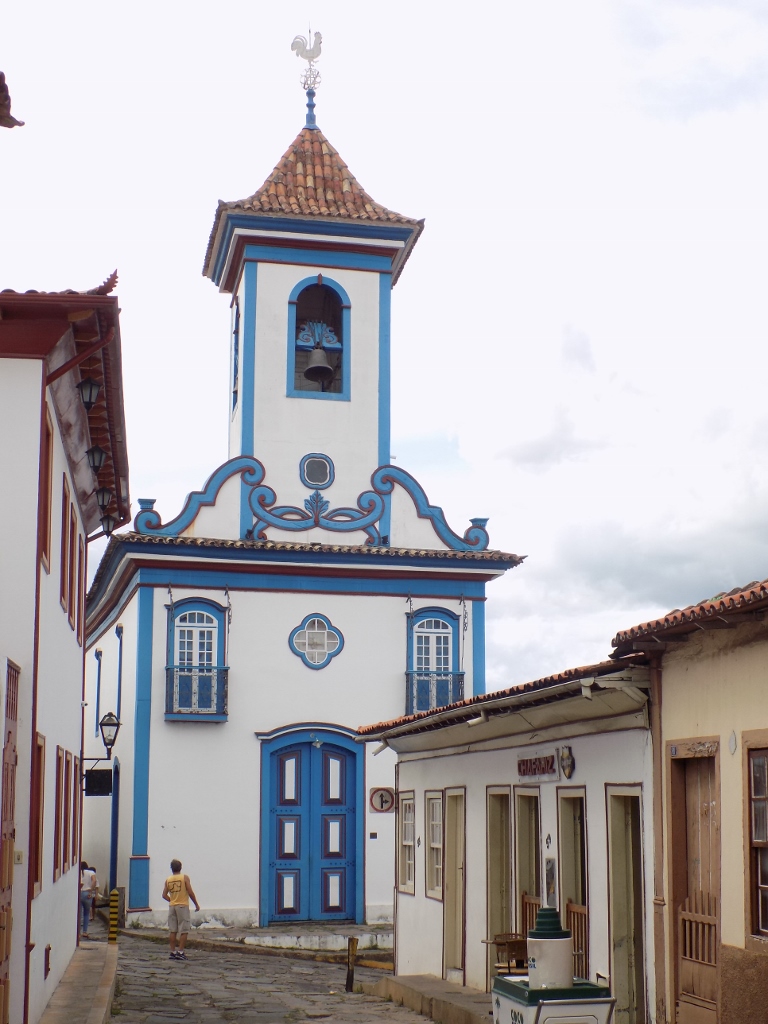 Church of Our Lady of Amparo
Church of Our Lady of Amparo
And then we came to a spacious square in which the Municipal Market is located. The market was built in the 19th century in order to control the trading in the town and has been in use ever since. What I find particularly interesting in connection with this building is that it served as an inspiration for the famous Brazilian architect Oscar Niemeyer when he designed the Presidential Palace in Brasilia.
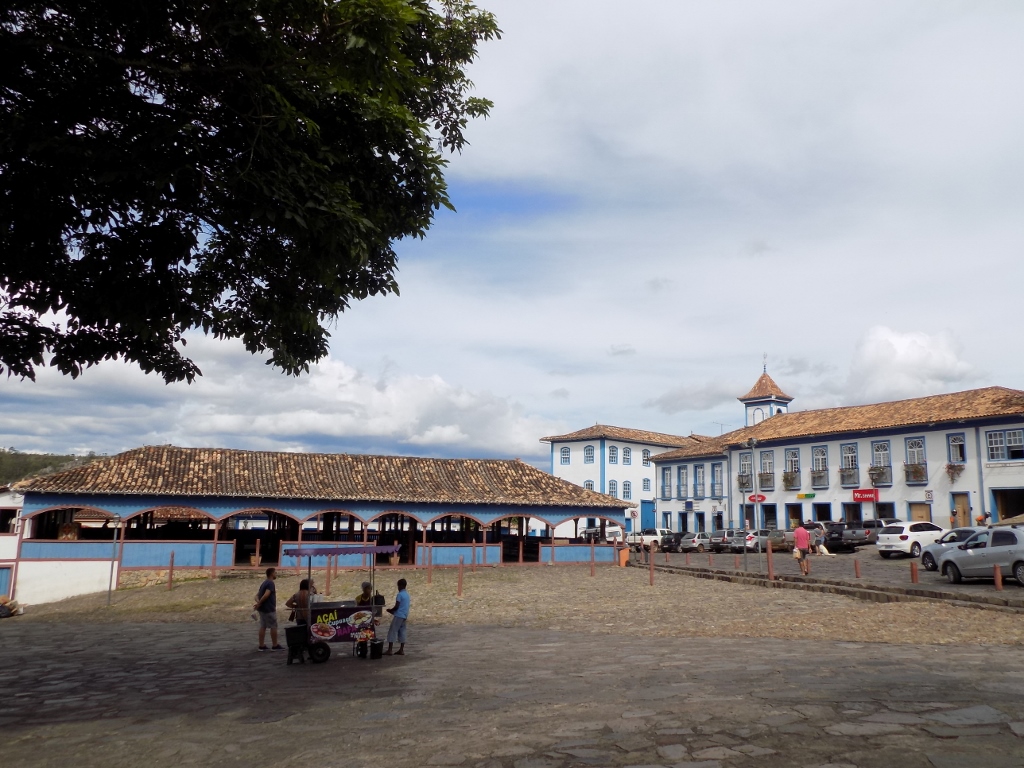 Square with the Municipal Market, while on the right-hand side it is possible to see the top of the tower of the Church of Our Lady of Amparo
Square with the Municipal Market, while on the right-hand side it is possible to see the top of the tower of the Church of Our Lady of Amparo
Since I’m mentioning famous people who are in one or another way linked to Diamantina, as well as to Brasilia, I must also mention Juscelino Kubitschek, President of Brazil (1956-1961) who was born precisely here in Diamantina in 1902 and who was actually the one who executed the idea of founding and constructing Brasilia as a very special capital of this country (a little bit more about this later).
Although the birth house of this Brazilian president is situated here in Diamantina, we were not interested in going there and visiting it, but rather we sat on a bench here in the square, after we had bought ice-creams from the cart that may be seen in the photo above. Like in many venues where they sell ice-cream which we saw around the places we visited, perhaps the most visible word is acai, meaning that they are selling ice-cream made of berries that are the fruits of a palm tree and that are supposed to be exceptionally healthy (these are the dark-purple layers in the glasses). Still, these sundaes that we took on this occasion contained so much sugar that it is not possible to talk about anything healthy in connection with this, but it was at least tasty, cold and refreshing.
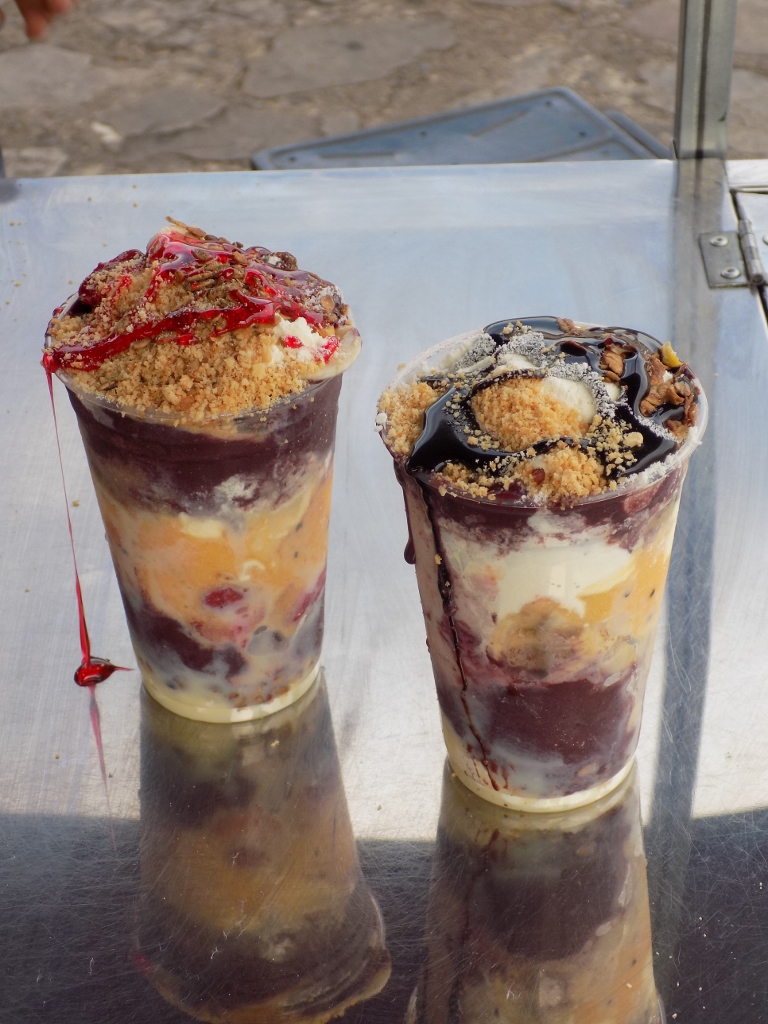 Sundae that includes acai-berry ice-cream
Sundae that includes acai-berry ice-cream
While we were lazily eating the sundaes, I also looked at the products which one woman was selling in the square. These were very imaginative bouquets of dried flowers which probably grow on the surrounding heights.
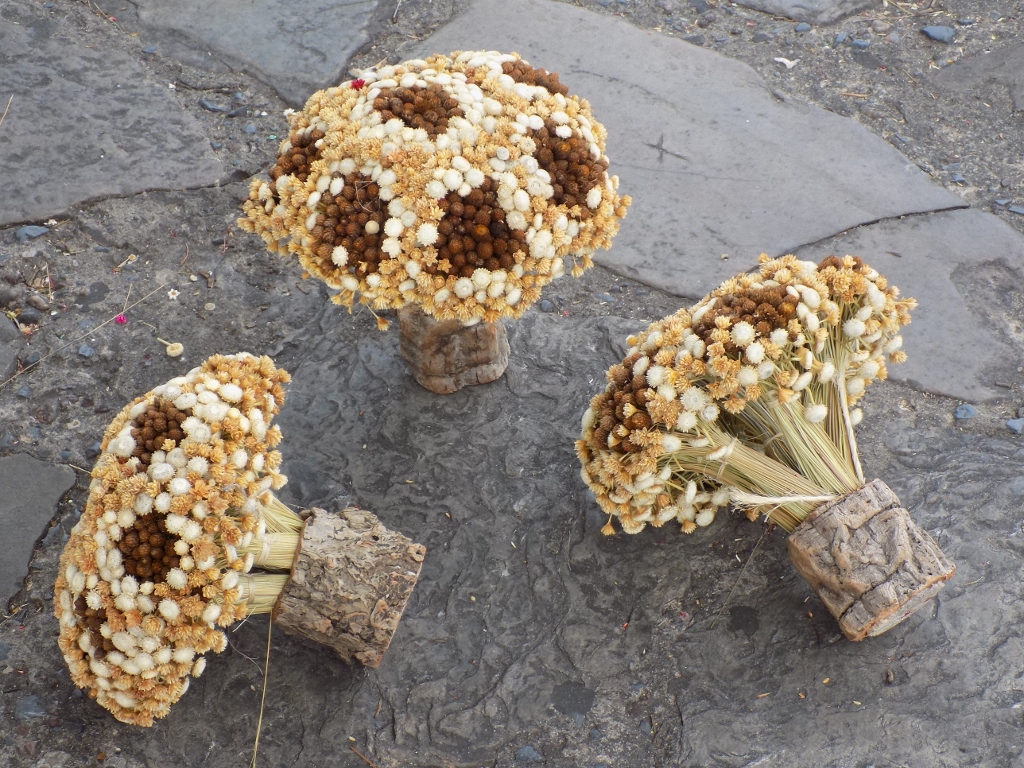 Bouquets of dried flowers on sale
Bouquets of dried flowers on sale
After this break we finally went to the square in which the Cathedral is located. There used to be an old church here, but as the town developed, there was a need for a cathedral. The building that may be seen today was built in 1940.
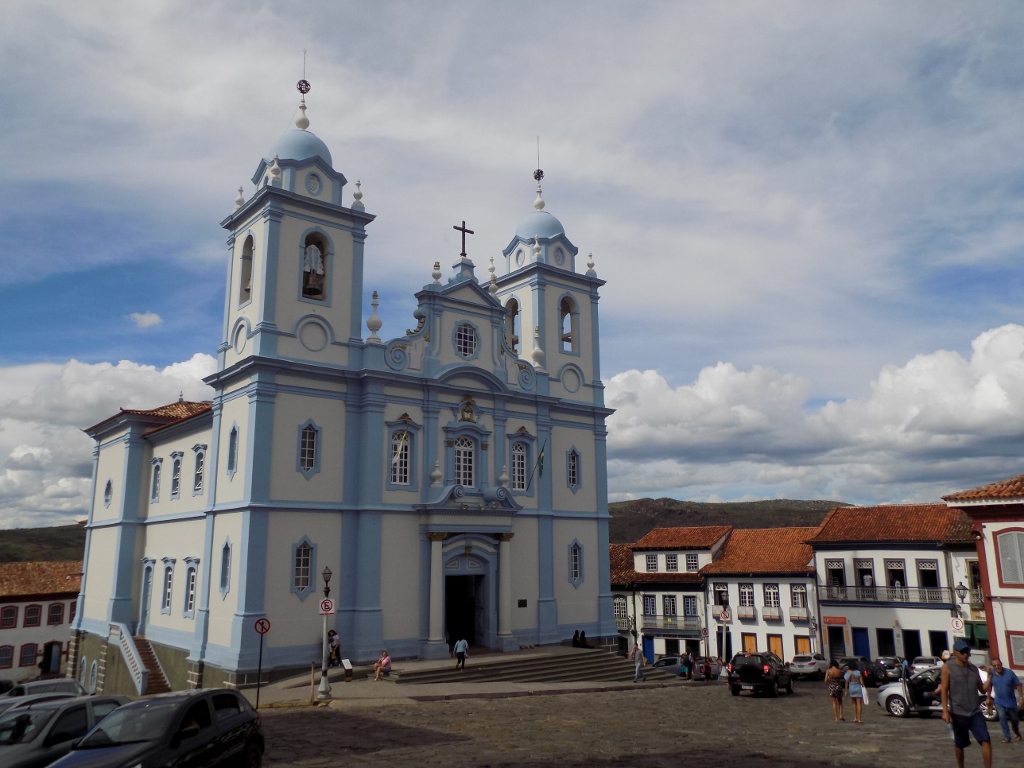 Santo Antônio Cathedral in Diamantina
Santo Antônio Cathedral in Diamantina
Although it is quite clear to me that the town was named after the diamonds mined in its surroundings, it still caught my eye when, while I was inside the cathedral, I saw on top of the arch bordering the altar space a symbol of the town which in my mind was rather vulgar. Somehow, I really find it hard to put together a shining diamond, which suggests extreme wealth and everything that goes with it, which most often is not positive, and the church that glorifies Jesus Christ who is the epitome of modesty. But, this is an old story about the human interpretation of the divine providence...
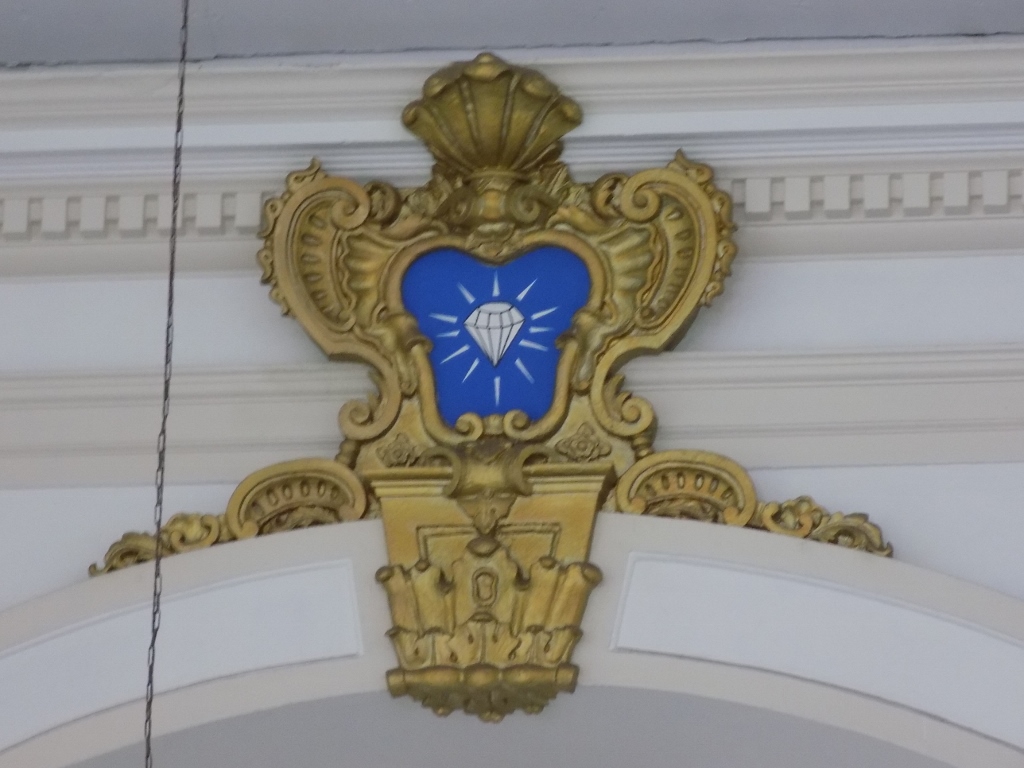 Santo Antônio Cathedral in Diamantina, a detail
Santo Antônio Cathedral in Diamantina, a detail
We had just a little bit more time to look at the surroundings of the Cathedral and then it was time to have something to eat.
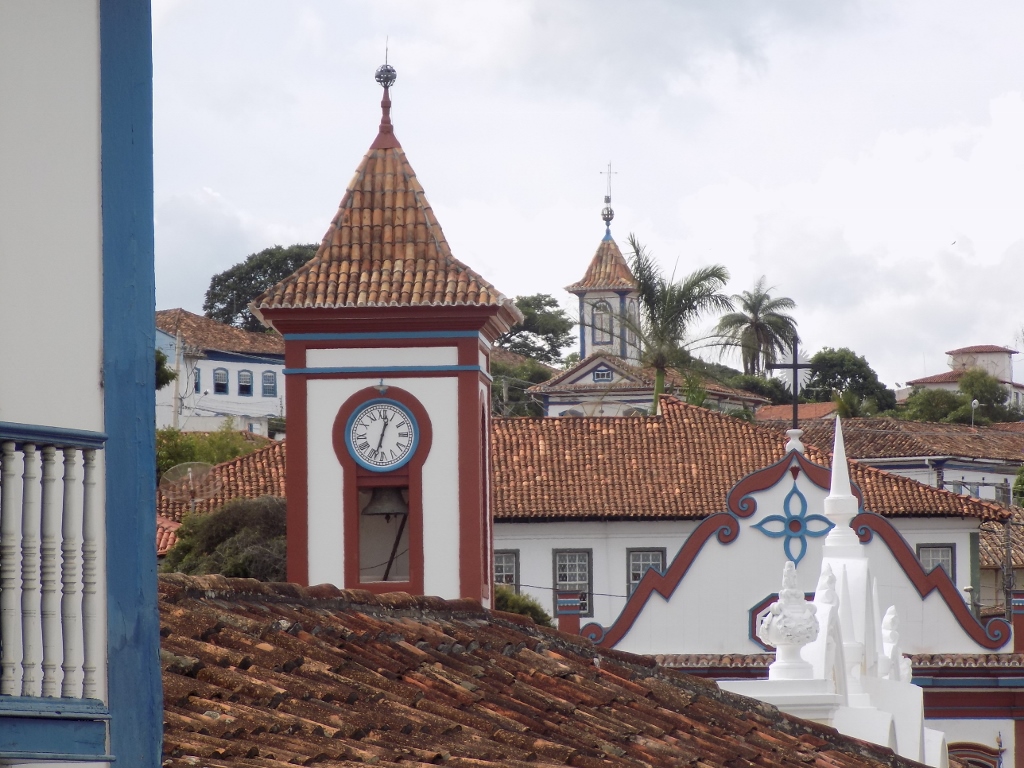 Roofs of Diamantina
Roofs of Diamantina
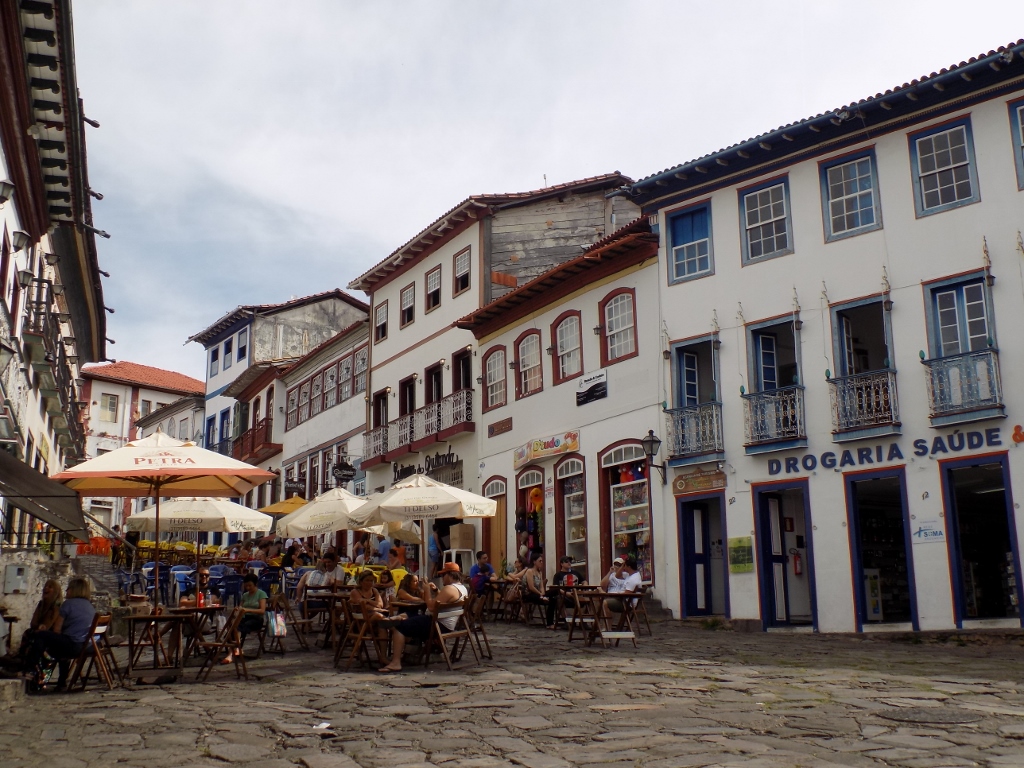 A wide street full of bars and restaurants
A wide street full of bars and restaurants
Taking into consideration that we still had five hours of drive back to Belo Horizonte ahead of us and a very late arrival in our hotel, it was also important for us to sit somewhere and have a nice lunch. So, we did exactly this after we had finished with our sightseeing. To start with, we took fantastic Brazilian cheese bread (pão de queijo) which incorporates cheese and flour made of cassava plant (also called manioc), while this “flour,” or rather starch extract, is called tapioca. I had already had them before, but these here were particularly tasty.
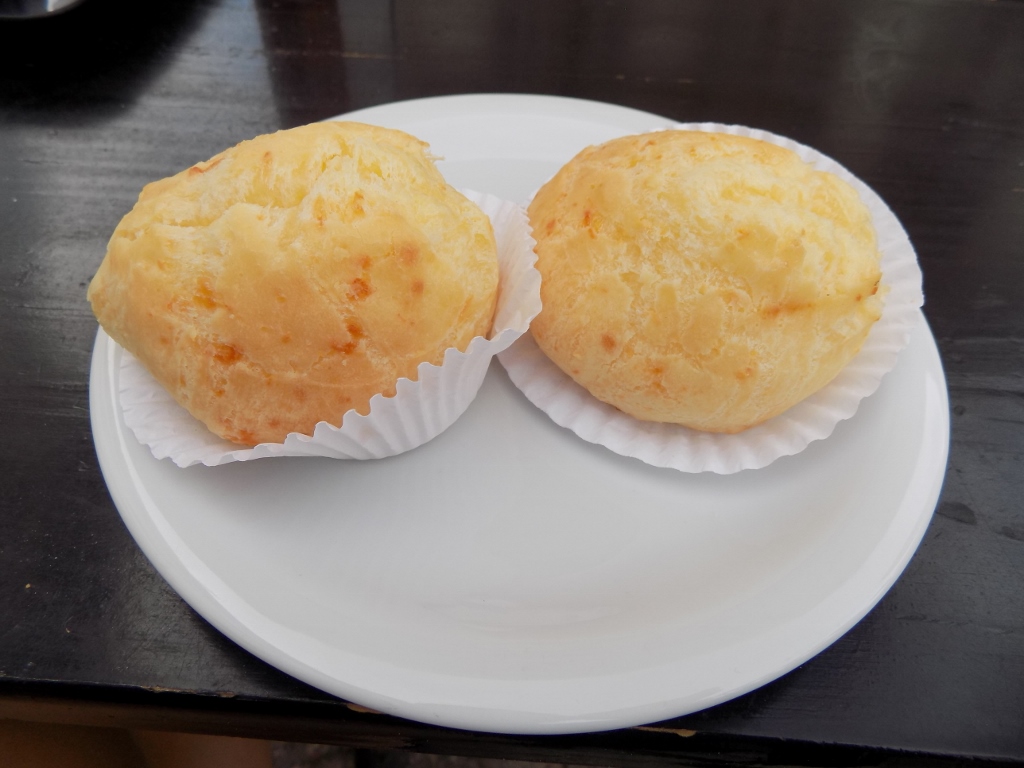 Brazilian cheese bread
Brazilian cheese bread
Then we caught a taxi and returned to the coach terminal where we got a coach back to Belo Horizonte. And there inevitably comes a question as to whether it was worth spending 10 hours on a coach in a single day in order to visit practically a village. Yes and no. Comparatively speaking, Diamantina made the weakest impression on me during this travel around Brazil, perhaps because I had already been in Ouro Preto. Still, I have no regrets. I would certainly feel sorry if I missed it. This colonial town is inscribed in the UNESCO’s World Heritage List, precisely due to the architecture of the town, but apart from it and Ouro Preto (also on the UNESCO’s List), there are a few more colonial towns in the federal state of Minas Gerais that are also picturesque and worth the visit. One of them is Congonhas which was in the plans of the two of us for the following day.
Still, we first spent those five hours on the coach and returned to Belo Horizonte only after 11 pm, so again we went to bed late that night.
The following day we left the hotel comparatively early in order to go to the town of Congonhas, but not in order to visit the town itself. We had a very specific destination in mind and that was a religious complex entitled the Sanctuary of Good Jesus of Congonhas or Sanctuary of Bom Jesus do Congonhas. This complex, too, is on the UNESCO’s World Heritage List.
The complex consists of a sloping churchyard with chapels, six of them, being on its flanking sides, which may be used as an approach to a grand staircase on top of which there is a church.
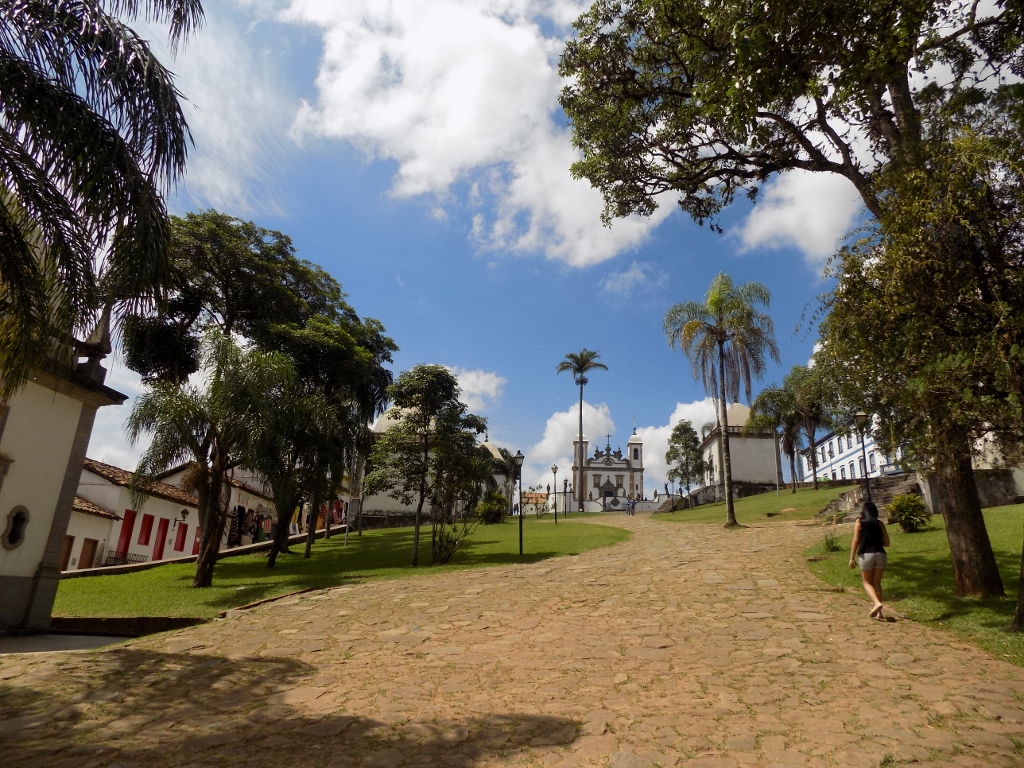 Sanctuary of Bom Jesus do Congonhas
Sanctuary of Bom Jesus do Congonhas
We started our sightseeing right from the staircase, since it is decorated with sculptures of 12 prophets which were all made of soapstone in the period from 1800 to 1805 by Antônio Francisco Lisboa, the most important Baroque mason and sculptor in Brazil, better known by its nickname – Aleijadinho (1738-1814).
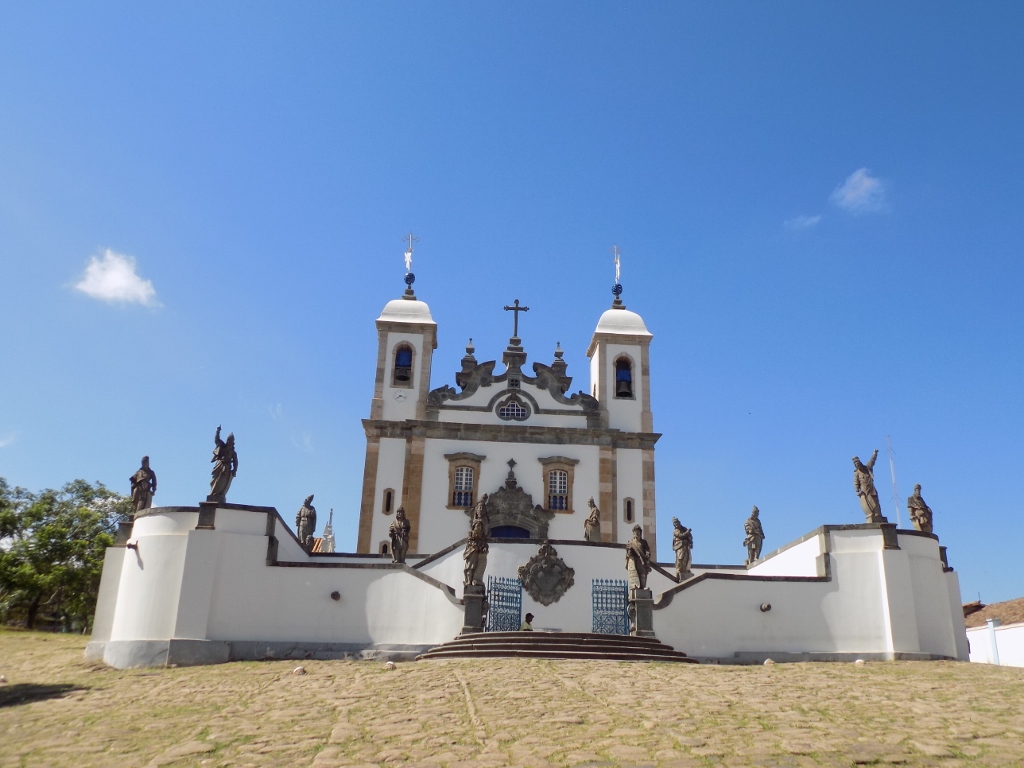 Sanctuary of Bom Jesus do Congonhas, the staircase and the church
Sanctuary of Bom Jesus do Congonhas, the staircase and the church
This artist was born and he died in the town of Vila Rica, which was the original name of Ouro Preto. He was a child of a Portuguese architect and a black slave. The nickname of this artist, Aleijadinho, means “little cripple” and that is no style figure. He suffered from some degenerative disease, it is presumed that it was leprosy, so with time he lost his hands and in the end he could not use his legs either. It is said that his students used to tie tools to his stumps. The 12 prophets which he did for the sanctuary in Congonhas constitute his crowning achievement.